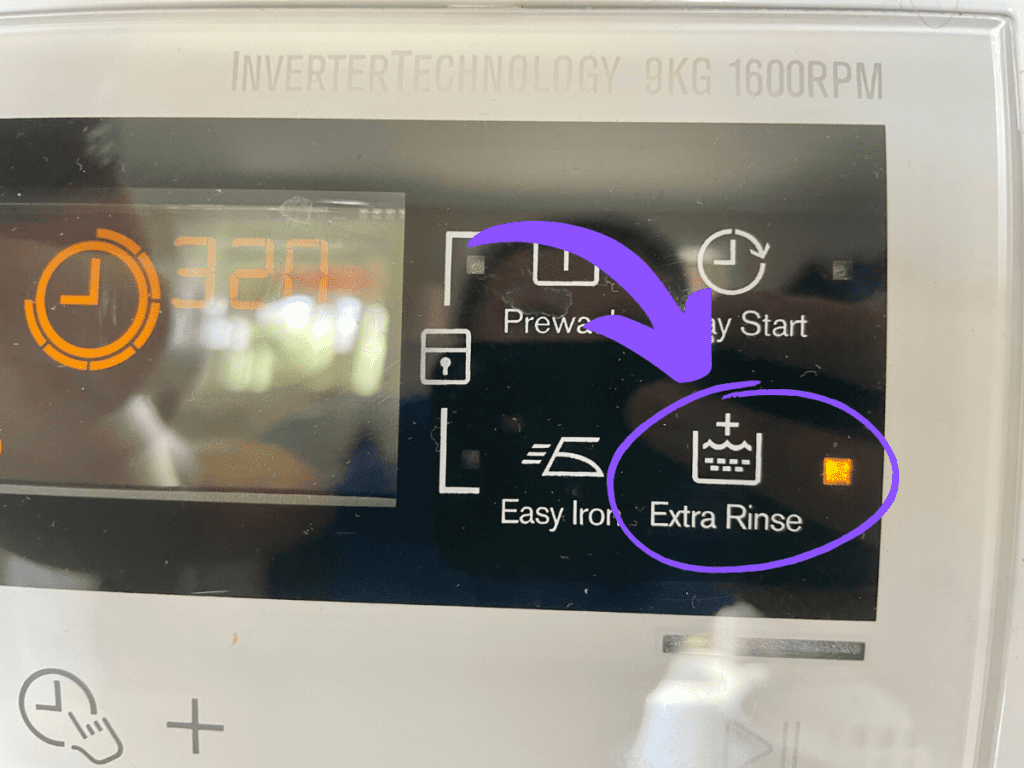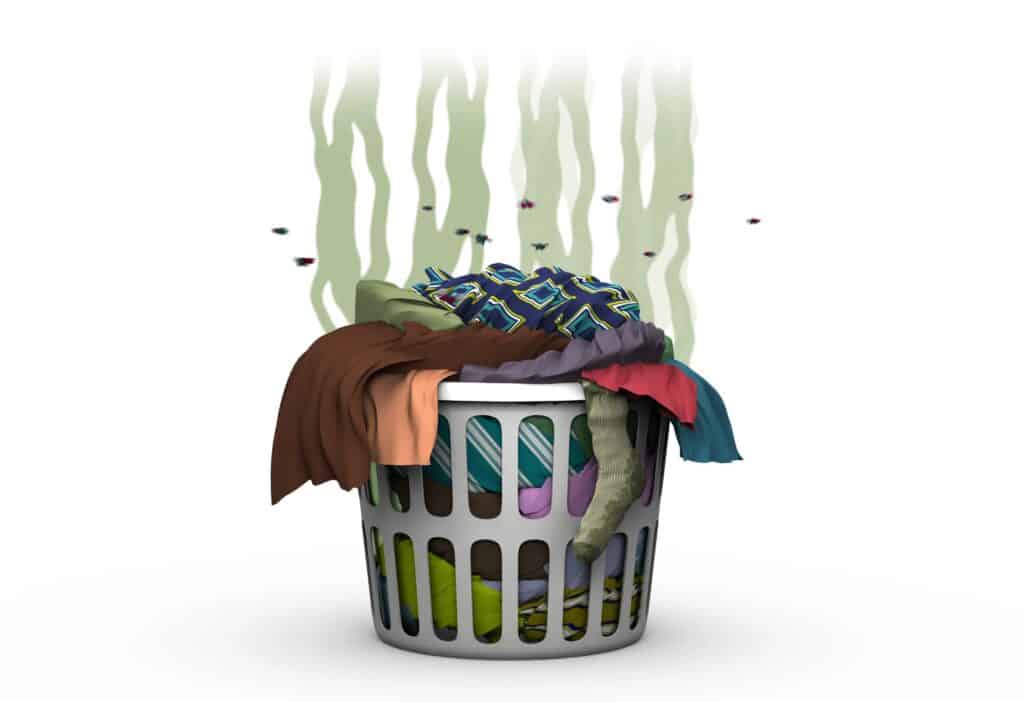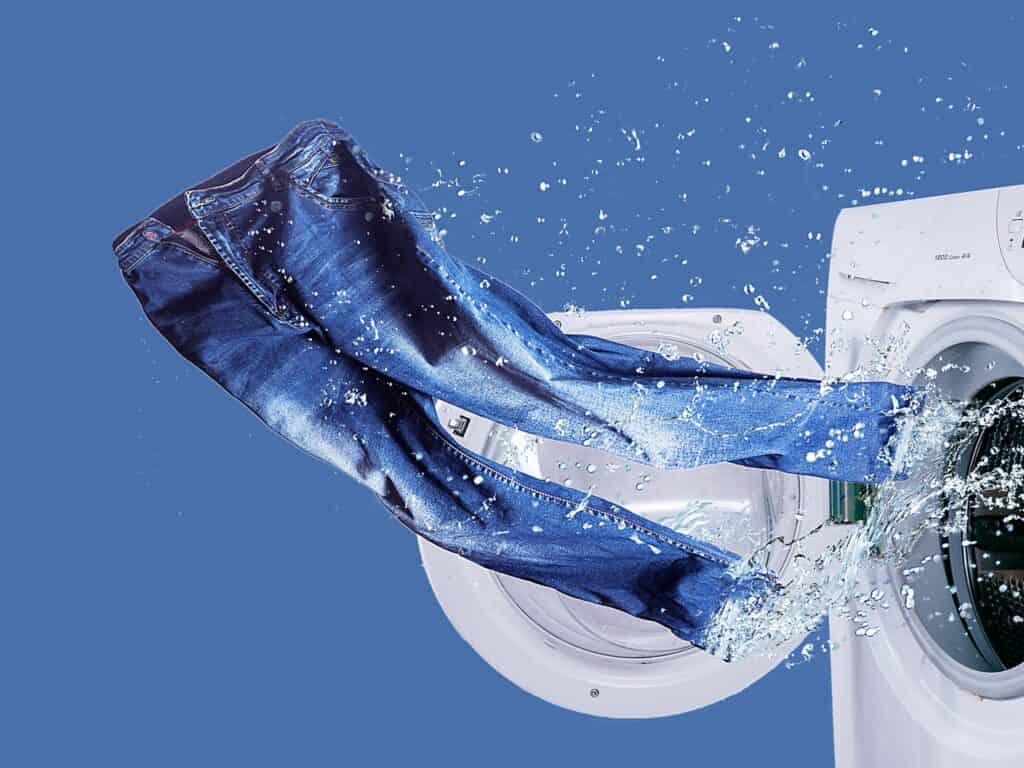Sometimes you notice that the clothes are coming out of the washer with suds marks on them. Did you use too much laundry detergent? Are you using too little water during the washing cycle? Or maybe the detergent is too strong, and the washing cycle is too short to thoroughly rinse the detergent.
This all calls for an extra rinse cycle.
The extra rinse cycle is a setting in the washer that allows you to give the laundry more time in clean water to get rid of all traces of the laundry detergent. It can be necessary with certain types of laundry, such as towels, bed sheets, and denim fabrics. People with sensitive skin will need the extra rinse cycle to ensure that the laundry is detergent-free.
The extra rinse cycle usually translates into more water and electricity usage, which can spike the utility bills. So you need to use it judiciously and only when it’s absolutely necessary.
Read more to find out all about the extra rinse cycle and when it’s the best time to use it.
What is the Extra Rinse Cycle?
Unlike other cycles on the washer, the extra rinse cycle is just letting the laundry sit in water as the washer sloshes it around and agitates it. It doesn’t need any added materials such as fabric softeners, laundry detergent, or stain removers.
Its sole purpose is to get rid of all of these materials and render the laundry clean and chemicals-free.
To use the extra rinse cycle, look for the settings on the washer’s panel. You’ll often find it under the Rinse category.
Keep in mind that using the extra rinse cycle doesn’t just use more water and energy; it also adds time to the washing cycle. That time varies depending on the type of washing setting you are using. But on average, it can range from 15 to 30 minutes more.

The extra rinse cycle is not part of the eco-friendly programs on your washer. That means you cannot use extra rinse with the Economy mode or other energy-saving settings.
And unless you have sensitive skin, chances are you’ll often use it with the heavy-duty cycles where the clothes are more soiled than usual or need more time to get thoroughly cleaned.
Why do you Need Extra Rinse Cycle?
The reasons for using the extra rinse cycle vary widely. For some people, it’s just a setting that they might need every now or then.
For others, it’s the one setting on their washer that they have never used even once. But for people with sensitive skin, the extra rinse cycle is just part of every laundry chore they do.
Here are the main reasons you might need the extra rinse cycle.
1. Extra Dirty Clothes

If you don’t know what the extra rinse cycle is or have heard about it but have never used it, chances are your laundry is usually lightly soiled, and you have never needed heavy-duty laundry detergents or stain removers.
But if you work in a less than clean environment and you go home every day with clothes loaded with grease, chemicals, or food stains, then the extra rinse cycle is what you need.
When the clothes are too dirty, the heavy-duty detergent needs more time to remove the stains and render them clean.
This prolonged time of the laundry in the detergent means that the regular rinse will not be able to wash off all of the detergents from the fabrics.
You need to add the extra rinse cycle to achieve clean clothes with no traces of suds on them.
2. Wash off Detergent Residue
It often happens that items of clothing such as jeans, towels, and other sturdy fabrics will come out of the washer with suds marks on them. These are white marks or stains that fade when the clothes dry but still remain visible.
They are not easy to wash off, and it’s a lot easier to treat them at the source during the washing process than to try to remove them after the laundry is dry.
The extra rinse cycle is designed specifically to solve this problem. It floods the laundry with clean water that works through the fabric and removes the last traces of detergents. You won’t have your jeans with suds marks on them or your towel smelling like detergent again after using the extra rinse cycle.

3. Protect Sensitive Skin
People with sensitive skin need special laundry detergents that contain only organic ingredients without the harsh chemicals.
Even if you don’t have sensitive skin, but you have a baby in the house, then you will need both a gentle detergent to wash the laundry, and you also need to make sure that the clothes carry no traces of the detergent by the end of the washing cycle.
The best way to get rid of all particles of the detergent, whether it contains chemicals or not, is to set the washer to the extra rinse cycle.
That cycle will remove all scents and chemicals from the clothes and will make them safer to put on your skin or your baby’s skin.
Pre-Soak vs. Extra Rinse
If the extra rinse cycle does nothing more than flood the laundry with clean water for an extended period of time, then how is it different from the pre-soak cycle?
They both seem to serve the same purpose. Is the extra rinse cycle redundant? And can you use the pre-soak cycle instead of the extra rinse cycle and vice versa?
First of all, the pre-soak cycle is not the same as the extra rinse cycle. The pre-soak cycle involves adding detergents and water and letting the stained clothes sit in the still water.
The main purpose of the pre-soak is to remove stains. This cycle usually involves minimal agitation of the water and is followed by the washing cycle.
The extra rinse cycle, on the other hand, is mainly to remove the detergent from the laundry. It takes place after the washing cycle and doesn’t involve any detergents or stain removers.
The extra rinse cycle agitates the water to facilitate the removal of the detergent particles from the fabrics. After the extra rinse cycle is over, you put the laundry in the dryer.
So it’s clear that the pre-soak and extra rinse cycles are two different programs on the washer. Each has a different job to do, and they occur at different times during the washing process.
Furthermore, when you use the pre-soak cycle, chances are you’ll need to use the extra rinse cycle to get rid of the detergent used during the soaking program.
Double Rinse vs. Extra Rinse
Double rinse and extra rinse are different names for the same thing. Some washers will have a cycle called Double Rinse, which works the same way as an extra rinse cycle.
After the washer is done with the first rinse cycle, it drains the drum and fills it with clean water for the second rinse cycle. You usually set this double rinse cycle either before the washing cycle starts or after it ends.
But what if your washer neither has an extra rinse cycle nor a double rinse cycle? How can you get your laundry to be rinsed twice during the same washing cycle?
The only workaround, in this case, is to allow the washing cycle to end, then right before the rinse cycle starts, restart the washing cycle again, but this time don’t add any detergents or fabric softeners.
This will give you 2 rinse cycles.
You can use that trick to get three rinse cycles for every washing cycle. You might have to switch off the washer and restart it to achieve this. But if you have extra dirty clothes, then those extra rinse cycles might be necessary after all.
Final Rinse vs. Extra Rinse
The rinse cycle is not a cohesive cycle of the laundry submerged in water while the drum agitates it. Modern washers try to conserve the use of water and energy, especially during the rinse cycle.
They usually start the rinse cycle by spraying the laundry with sharp jets of water at intervals. This process gets most of the detergent and stain remover out of the laundry, but not all of it.
This is followed by what is known as the final rinse. That’s where the laundry is swimming in the water while the drum rotates every other way to agitate the water and help it penetrate the fabrics.
By the end of the final rinse, the laundry is ready for the dryer. You don’t need to program the washer to use the final rinse; it’s already a built-in function pre-programmed in the machine.
So while the final rinse is not a cycle or a program of its own, it’s actually a part of each rinse cycle the washer performs. The final rinse does not add extra time to the laundry process, nor does it take extra water or energy.
That’s the opposite of what the extra rinse cycle does. This is why you should only use the extra rinse cycle when you actually need it and not with every washing cycle.
How Many Rinse Cycles should I Use?

The question of how many rinse cycles to use is closely related to the type of fabrics you are washing and the type of washing cycle you select.
For daily wash, you probably only need the regular washing cycle or even the eco-friendly programs. If that’s the case, then a single rinse cycle will do just fine. You won’t have detergent residue on the laundry, and the clothes will be clean.
Unfortunately, there’s no clear-cut answer to that question. Lots of variables play a role in determining how many rinse cycles you would need. These factors include:
- Fabric: In general, the thinner the fabric, the less water and energy it needs to get cleaned. When everything else is equal, you should allow thin fabrics such as silk, synthetics, and satins one rinse cycle under the delicates or daily wash cycles. Thicker materials such as denim and towels need more than one rinse cycle to get all the detergent out.
- Degree of Dirt: Heavily soiled clothes such as the ones you wear to work in unclean environments or activewear that is exposed to a lot of sweating need plenty of water to wash away the stains and even more water to wash away the detergents and stain removers. Officewear and clothes you wear only once when you go out only need a single rinse cycle.
- The Program: Some washers will not let you adjust the rinse cycle by adding another one. These are pre-programmed settings that offer less flexibility. Other washers refine the washing process by letting you customize the program as much as it suits you. The more control you have over the washer setting, the better cleaning you get and the more resources you save.
In general, you’re the best expert when it comes to deciding the best setting for the type of laundry you have at hand. If your washer allows you to adjust the water temperature and rinse cycles of each setting, then you should take advantage of that.
Keep in mind that the regular cycle gives you two short rinse cycles. But if you think that your laundry load needs more rinsing, add another one.
Conclusion
Extra rinse when it comes to doing the laundry often means cleaner clothes and no suds marks. You would usually need the extra rinse cycle with heavy fabrics such as jeans, towels, tablecloths, and heavy jackets.
While the extra rinse means more water is used, the washer often puts that extra water to good use by removing the last traces of the stain removers and detergents from the clothes.
People with sensitive skin and children will benefit the most from the extra rinse cycle. It renders the laundry chemical-free and makes it safer to put on your skin without getting an allergic reaction.
I’ve created a comprehensive guide on how to use all the settings on your washing machine that may interest you to read next.

I’m an expert wardrobe organizer and a bit of a clean freak. I created this website and its YouTube channel to share practical guides about laundry and organizing. My teachings have been featured in multiple large news publications, and I’ve self-published two wardrobe organizing books and an entire course on the subject.
